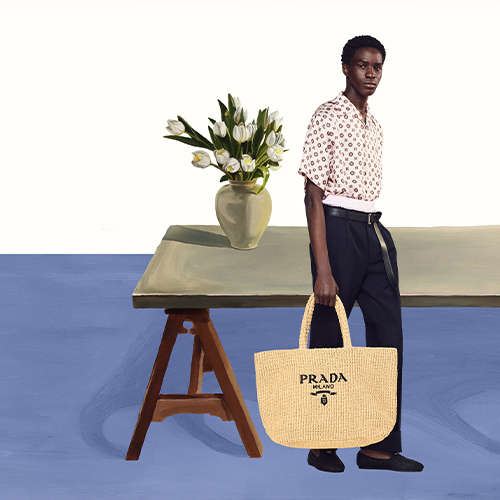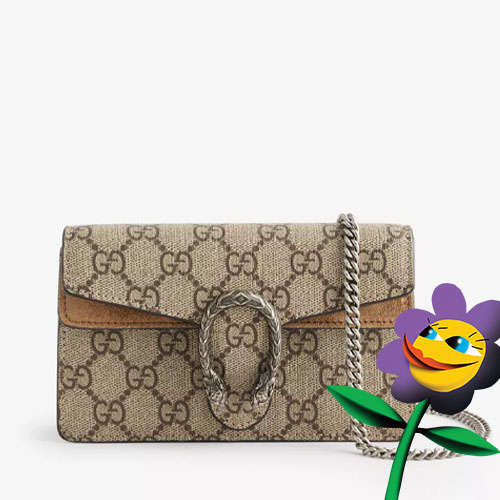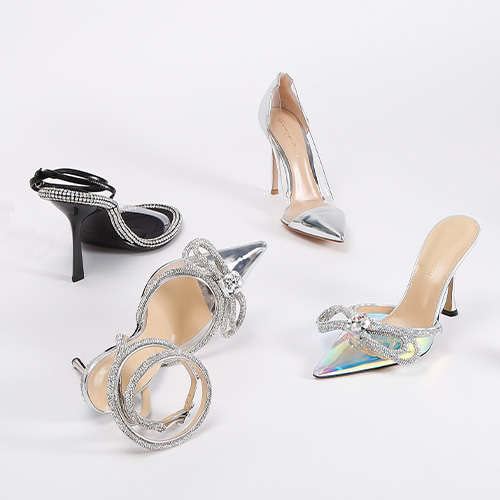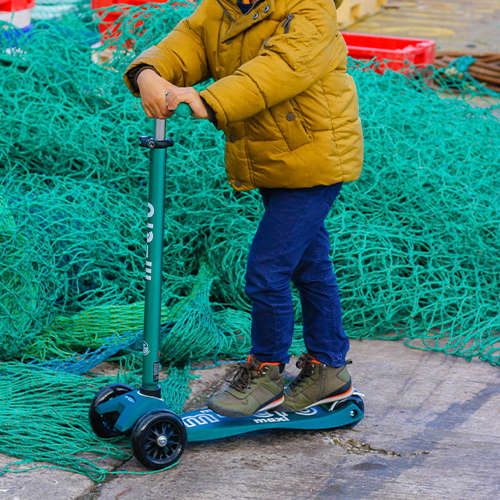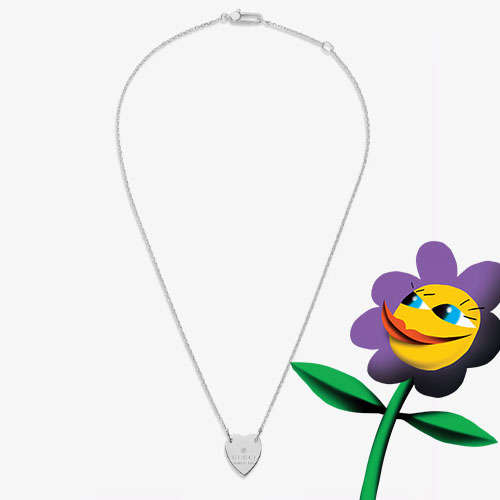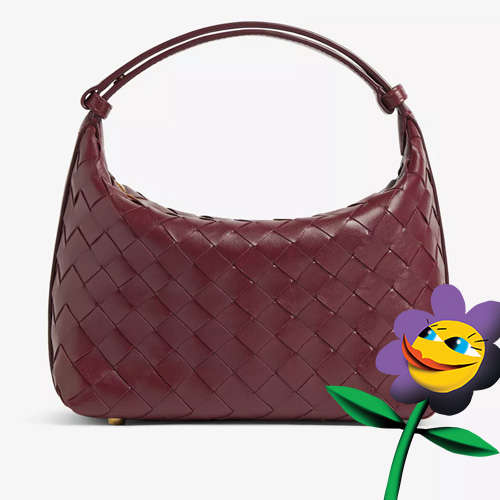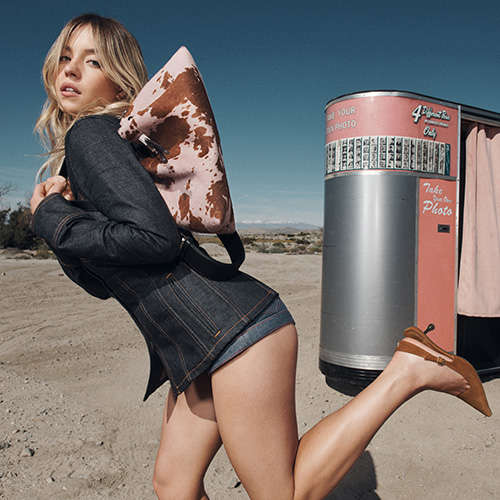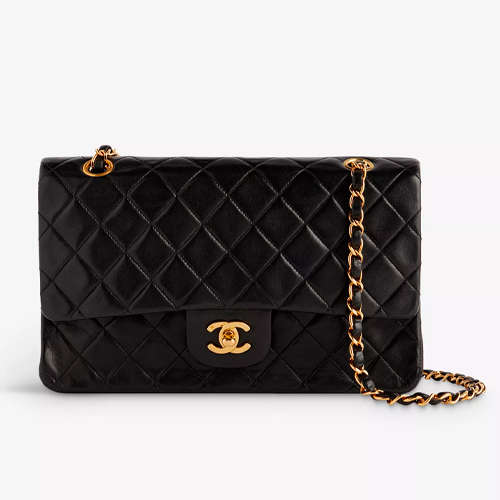- Australia / AUD $
- Canada / CAD $
- China / CNY ¥
- France / EUR €
- Germany / EUR €
- Hong Kong SAR China / HKD $
- Ireland / EUR €
- Italy / EUR €
- Japan / YEN ¥
- Kuwait / USD $
- Macao SAR China / HKD $
- Netherlands / EUR €
- Qatar / USD $
- Saudi Arabia / USD $
- Singapore / SGD $
- South Korea / KRW ₩
- Spain / EUR €
- Taiwan / TWD $
- United Arab Emirates / USD $
- United Kingdom / GBP £
- United States / USD $
- Not yours? Read more
Tell us what you think
Shop in your local currency and language
You are currently in United States US / USD $ store
- English
- English
- English
- English
- English
- English
- English
- English
- English
- English
- English
- English
- English
- English
- English
- English
- English
- English
- English
- English
- English
Did you know that we deliver to 130 countries or regions and offer a range of delivery options to suit you wherever you are in the world? Find out more
Sign up once to our Selfridges+ service and you can enjoy unlimited deliveries wherever you are in the world. FIND OUT MORE
International delivery
With almost everything on selfridges.com available for International Delivery, you can send your order to 130 countries or regions around the world, including North America, Australia, the Middle East and China.
Although we only offer 20 currencies to browse in online, you can still deliver to all of the following countries or regions:
- Algeria
- Andorra
- Antigua and Barbuda
- Aruba
- Australia
- Austria
- Azerbaijan
- Bahrain
- Bangladesh
- Barbados
- Belarus
- Belgium
- Belize
- Bermuda
- Bolivia
- Botswana
- Brunei
- Bulgaria
- Cambodia
- Canada
- Cayman Islands
- Chile
- China
- Colombia
- Costa Rica
- Croatia
- Cyprus
- Czech Republic
- Denmark
- Dominica
- Dominican Republic
- Ecuador
- Egypt
- El Salvador
- Estonia
- Finland
- France
- French Guiana
- Germany
- Gibraltar
- Greece
- Grenada
- Guadeloupe
- Guatemala
- Guernsey
- Guyana
- Honduras
- Hong Kong
- Hungary
- Iceland
- India
- Indonesia
- Ireland
- Israel
- Italy
- Jamaica
- Japan
- Jersey
- Jordan
- Kazakhstan
- Kenya
- Kuwait
- Laos
- Latvia
- Lebanon
- Lesotho
- Liechtenstein
- Lithuania
- Luxembourg
- Macau
- Malaysia
- Maldives
- Malta
- Martinique
- Mayotte
- Mexico
- Monaco
- Montserrat
- Morocco
- Myanmar
- Namibia
- Netherlands
- New Zealand
- Nicaragua
- Nigeria
- Norway
- Oman
- Pakistan
- Panama
- Paraguay
- Peru
- Philippines
- Poland
- Portugal
- Puerto Rico
- Qatar
- Reunion
- Romania
- Rwanda
- Saint Kitts and Nevis
- Saint Lucia
- Saint Martin (French part)
- San Marino
- Saudi Arabia
- Serbia
- Singapore
- Slovakia
- Slovenia
- South Africa
- South Korea
- Spain
- Sri Lanka
- Suriname
- Swaziland
- Sweden
- Switzerland
- Taiwan
- Tanzania
- Thailand
- Trinidad and Tobago
- Turkey
- Uganda
- Ukraine
- United Arab Emirates
- United Kingdom
- United States
- Uruguay
- Venezuela
- Vietnam
-
My Account
- Selfridges Unlocked
- Preferences
- Wish List
- New In
- Women
- Men
- Bags
- Shoes
- Beauty
- Kids
- Home & Tech
- Food & Wine
- Jewellery & Watches
- Gifts
- Brands
- Reselfridges
-
All mens bags
- Backpacks Messenger bags Tote bags Briefcases Belt bags Wallets Cardholders Travel bags Wash bags
-
All kids bags
- Baby changing bags Boys' bags Girls' bags
-
Shop by brand
- BYREDO CHANEL CHARLOTTE TILBURY DIOR JO MALONE LONDON LA MER LE LABO REFY SUQQU TOM FORD SHOP BY BRAND A-Z
-
Shop by brand
- BARBIE BURBERRY GUCCI JELLYCAT LEGO MONCLER ENFANT STEIFF STONE ISLAND TROTTERS UGG SHOP BY BRAND A-Z
Selfridges says
Kids’ experiences
Selfridges says
Wedding jewellery
-
Cards & wrap
- Gift wrap Greeting cards
-
By recipient
- Gifts for her Gifts for him Gifts for them Gifts for kids Gifts for pets
-
By price
- Under £75 Under £150 Under £250
-
By occasion
- Mother’s Day Father’s Day Birthday New baby New mum Wedding Anniversary Engagement New home
-
By type
- Personalised gifts Exclusive gifts
-
Trending brands
- BIRKENSTOCK CANADA GOOSE CARTIER CHANEL LEGO MARC JACOBS PRADA REPRESENT SELETTI SKIMS
Selfridges says
Our exclusives
Selfridges says
Learn about Project Earth
Find out more about our labels
Discover our commitments
| Good as new: repair your most-loved items |
Order Mother’s Day gifts by 5 May. Shop now
MY LIFE IN STYLE WITH SIR PAUL SMITH
Inside the mind of the long-standing (and legendary) suit-maker
Words: Charlotte Core
Famed for its distinctive multicoloured stripes and eye-catching storefront designs, Paul Smith has grown from a fledgling shirt business based in a tiny, windowless room in a Nottingham back alley to a multi-million-pound empire that spans the four corners of the globe and sells products ranging from suits to cycling helmets. Sir Paul Smith himself owns all of his stores outright (that’s over 300, btw), was knighted in 2000, is something of a Britpop icon in Japan, and just happens to be one of the nicest men in the industry. So, how does a school drop-out become the UK’s most successful fashion export?
Born in Nottingham in 1946, Sir Paul had dreamt of being a professional cyclist, but a major accident at the age of 17 dashed those hopes. During his recovery, he began hanging around a local pub, frequented by students from the local art school who taught him (among other things) that Bauhaus wasn’t the name of a nearby housing estate – and his spark for design was born. Swapping cycling shorts for suits (and gaining extra tutelage from his then girlfriend, now wife, fashion design teacher Pauline Denyer), Sir Paul went on to work in a local fashion shop, dressing windows and writing invoices, before learning tailoring from the experts on Savile Row. Soon after, Paul Smith – the brand – was born.

Portrait painting by Karl Kopinski, Early photograph of Paul Smith, A model train set in Paul Smith's London office, Paul Smith in his first store on Byard Lane, Nottingham, 1970
A familiar fixture in wardrobes worldwide, Paul Smith has been the go-to for a well-made suit for years – and for good reason. The brand’s down-to-earth, inclusive charm is the antithesis to the somewhat intimidating, by-invitation-only world of tailoring. Like its steadfast founder, Paul Smith’s designs are all about playing the long game. The suits, casual wear and accessories feel both classic and innovative, with a hint of British irreverence and eccentricity woven in for good measure.
Here, we celebrate a rock-steady, independent fashion icon who’s still working the shop floor, 50 years on.

Paul Smith Spring/Summer 1990
You weren’t introduced to fashion until you were in your early twenties. What’s your first memory of feeling ‘dressed up’?
You have to remember that when I was younger, we didn’t have access to the kinds of creative types of clothing that are so available today. I remember having my first-ever bespoke suit made out of pink fabric. The tailor and everyone I passed on the street thought I was completely mad, but I just thought it was the best thing ever.
Your first brush with the arts was when you met art and design students in a local pub – do you remember what you discussed?
I remember them telling me all about the Bauhaus (which at the time I thought was a local housing estate) and Le Corbusier. I just became so fascinated by this world of creativity that up to then I’d known nothing about.
What was the biggest ‘pinch-me’ moment when you started your label?
Probably my first fashion show in my friend’s apartment in Paris in 1977 – or ’76, maybe, I can’t remember! And then obviously [opening] my first tiny, tiny little shop in my hometown of Nottingham on 9 October 1970.
I remember them telling me all about the Bauhaus – which at the time I thought was a local housing estate – and Le Corbusier. I just became so fascinated by this world of creativity.

Paul Smith Spring/Summer 1990
You’ve been designing formalwear since the 70s. How do you stay inspired?
I always say, “You can find inspiration in everything and if you can’t, look again". I’m lucky enough to wake up every morning and look forward to a new day. I find everything around me endlessly inspiring – anyone who has been following my Instagram during lockdown will see how I’m surrounded by inspiration in my office in London.
Your background is in bricks-and-mortar commerce – how do you think that influenced your label’s direction?
I’ve always kept my feet firmly on the ground and never lost sight of the person who’s paying my bills: the customer. One of the highlights of my week is spending time working in one of my London shops, which I have the opportunity to do most Saturdays. The experiences I have speaking to the customers constantly influence the work that I do.
Do you have occasions when customers chat to you without knowing who you are?
From time to time. To be honest, whether they know who I am or not, I would always treat them exactly the same, and most of the time, the first thing I do when I speak to people is introduce myself.

Paul Smith Spring/Summer 1990
Shop PS by Paul Smith
Swipe to view

Paul Smith store, Los Angeles
You have stores all over the world. What’s one of your favourite locations to visit?
I always say it’s impossible to choose favourites. as it depends so much on your mood, but I have a very long-standing and special relationship with Japan. We have a very big business there, which has come about from years and years of regular visits and me playing a very active role in making sure we do things properly. I love so much about Japanese culture.
What does British style mean to you today?
Initially, British style was very reliant on the class system – on ‘London Town’ pinstriped suits, and then tweed for the countryside. But now, with the world of fashion being so international, there’s not such an obvious ‘British’ look.
I’ve always kept my feet firmly on the ground and never lost sight of the person who’s paying my bills: the customer.

Backstage at the Paul Smith Autumn/Winter 2020 show
If you see someone out on the street wearing Paul Smith, how do you feel?
Proud, of course! I can also often remember exactly where the fabric came from, or when the particular print was developed. I have quite a memory for details like that – people are very often impressed!
What’s the best advice you’ve received?
‘Never assume’. It’s the company motto, and it has helped both me personally and the business through so many scrapes.
What’s been the hardest work hurdle you’ve had to overcome?
Probably the hardest hurdle I’ve had to encounter is selling [products] in 73 countries; each country has a different view on fashion, and each country has a different priority. It could be sportwear or tailoring…how people dress. And then, of course, keeping a business going for a long time.
Shop PS by Paul Smith
Swipe to view

Backstage at the Paul Smith Autumn/Winter 2020 show
Who are your style icons?
Daniel Day-Lewis and David Bowie – both people who I’ve been lucky enough to call friends.
Can you describe a piece of art you have hanging in your studio – what does it mean to you?
Anyone who’s seen a photo of my studio will know that there are rather a lot of things hanging on the walls. The portrait of me [pictured] is by a friend called Karl Kopinski. Karl is a fellow bike rider and also a brilliantly talented artist. We’ve worked together on various things over the years.
How do you like to switch off after a long day?
I don’t think I really know what ‘switching off’ means! My head is spinning more or less constantly. I start work very early in the morning and my favourite time of the day is around 6:30am. I’m the only person in the office, I can put on some music and just get on with things. If I’m not travelling, I try to be home by 6pm to have dinner with Pauline, my wife.
There have been lots of discussions about how the retail landscape will change…seasonless clothes, fewer deliveries going into the shop, maybe only two collections a year.

Backstage at the Paul Smith Autumn/Winter 2020 show
Favourite place in London to grab a drink or dinner?
It totally depends on your mood, but both Claridge’s and The Wolseley are places that I have a lot of very fond memories.
How many ‘lucky rabbits’ have you accumulated over the years? Which one’s your favourite?
Too many to count! Pauline gives me a new one before every one of my fashion shows as a good-luck charm, and they are all particularly beautiful.
Your SS20 collection was inspired by the colour palettes of Robert Rauschenberg. Are there any other artists that speak to you?
It’s impossible just to list a few! I’m endlessly inspired by art and creativity, in all its forms. I’m lucky enough to get access to the Tate [galleries] early in the morning and be given extra-special private tours. Recently, I’ve seen shows by everyone from Steve McQueen to Olafur Eliasson, and many more – all of them are inspiring in different ways.

Backstage at the Paul Smith Autumn/Winter 2020 show
Shop Paul Smith accessories
Swipe to view



Backstage at the Paul Smith Autumn/Winter 2020 show
How do you see the retail landscape changing post Covid-19?
There have been lots of discussion about how the retail landscape will change, and how the world of fashion will change. A lot of discussion about seasonless clothes, fewer deliveries going into the shop, maybe only two collections a year. Also, delivering clothes to the relevant season and not having winter going in [stores] in June or July, which is obviously very sensible. Nobody’s been brave enough to commit to anything yet, so let’s wait and see.
What do you hope for the future of Paul Smith?
One of the things I’m most proud of is continuity, so, for the future of Paul Smith, more of the same, please!
(Hidden on mobile)
Our Stores & Events
Customer Services
Seasonal
Top 10 Most Loved Workplace in the UK for 2022
by Newsweek International
Named Best Retailer 2020
at the Positive Luxury Awards
Four time winner of Best Department Store in the World
at the Global Department Store Summit
Join Selfridges Unlocked

Your Key to extraordinary. Become a Keyholder and unlock exclusive invites, first looks, free delivery and monthly prizes.
Error sending data, please try again later
You’ll receive communications and online advertising tailored to the things you love, so they are relevant to your location, what you've shown an interest in and the things you buy from us. You can unsubscribe at any time by clicking the link in any email. See our privacy policy for more information.
Welcome to Selfridges Unlocked
From now on, you’ll enjoy full access to product launches, events, news and free delivery.



